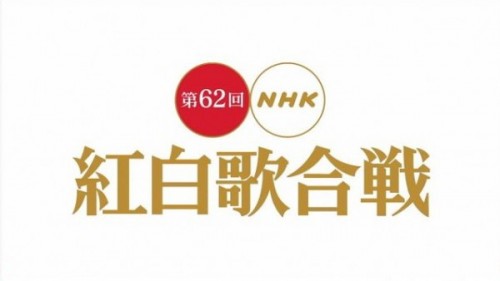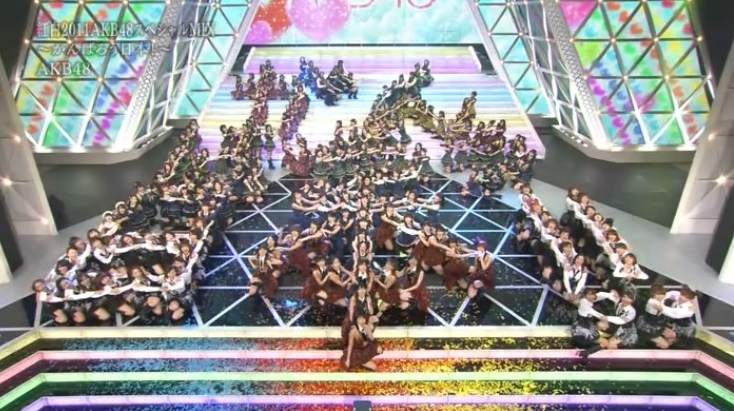Just The Facts

Some background information about Kohaku and the 2011 event in general

General Information
Date of event: Saturday, December 31, 2011
Venue: NHK Hall, Tokyo (Shibuya)
Opening Theme: "1231" by Yoko Kanno
Red Team (Akagumi) Leader: Mao Inoue
White Team (Shirogumi) Leader: Arashi
Support Team (Ouentai): AKB48 and Terry Ito
Emcee/Mediator: Wataru Abe

Artist Debuts at the 2011 Event
* Mana Ashida: Red Team/Kodomo Special Performer
* Fuku Suzuki: White Team/Kodomo Special Performer
* Inawashirokos: White Team Performer
* Ringo Shiina: Red Team Performer
* KARA: Red Team Performer
* Girls Generation (Shoujo Jidai): Red Team Performer
* Sayaka Kanda: Red Team Performer

What Is Kohaku?
The Kohaku Uta Gassen (Red and White Song Battle) or "Kohaku" for short is the biggest televised annual event in Japan and a huge part of New Year's Eve celebrations, the first three editions aired at the start of each year, but has aired every New Year's Eve since the 4th edition. First broadcast on radio in 1951 by Japanese public broadcaster NHK, it had the same premise as the Eurovision Song Contest (which started five years later in 1956): bringing people back together through song as a nation rebuilt itself after the Second World War. The first televised Kohaku special aired in 1953 (the 3rd and 4th editions held in the same year) from the Takarazuka Theatre and since the 24th edition in 1973 from its current home at NHK Hall in Shibuya
The show is quite simple: two teams of performers from both the J-pop and enka/adult contemporary music industries perform songs relevant to the year's theme, the teams are called the Akagumi (red team) which is made up of female singers/groups and the Shirogumi (white team) which is made up of male singers/groups. Some artists often perform their songs with those from the other team, and group numbers featuring artists from both teams are also done. The audience at the venue along with special celebrity judges and viewers watching at home vote on the group they thought performed the best
Performing on Kohaku is by invitation only, NHK selects the performers and songs by sales (sometimes chart position on Oricon) and adaptability to the theme of that year, surveys are also conducted asking people what music they want to hear on the show. Even today, because of the show's large reach, many artists consider appearing on Kohaku the highlight of their careers

"Ashita wo Utaou: Let's Sing For Tomorrow"
On March 11, 2011, a devastating 9.0 magnitude earthquake and massive tsunami hit the Tohoku region in northeastern Honshu, leaving tens of thousands dead and many more injured or homeless. To help raise the spirits of those affected and still rebuilding, as well as to help Japan look to the future on a positive note, the official Kohaku theme for 2011 was "Ashita wo Utaou" ("Let's sing for tomorrow") as a message of hope and encouragement

Kohaku Glossary
Omisoka: New Year's Eve in Japan, a day traditionally spent at home with family and friends watching variety shows on TV. Kohaku is the most popular show to watch during this time
Akagumi: Translated as "Red Group", the Kohaku team made up of female soloists/groups
Shirogumi: Translated as "White Group", the Kohaku team made up of male soloists/groups
Ouentai: Support team or cheerleaders, mainly in charge of promoting and building enthusiasm towards the event
Enka: A play on traditional Japanese music, its style is similar to Western ballads, blues and jazz
Corner: Special segments during the show presented by one of the team leaders or both leaders together based on the annual theme
Medley: Two or more songs in one presentation by artists on either team
Intermediate Results: The vote totals as it stands as of the end of the first half of the show
Opening Stage: The very first act of the show
Saigo no Uta: Translated as "Last Song", the final songs of each team. Also referred to as the final act of the show

Interesting Facts
* This was the first Kohaku NHK broadcast in full digital TV. Analog service had recently ended in Japan
* According to NHK, this was the longest Kohaku broadcast in time length at four and a half hours
* Among the special guests were members of Nadeshiko Japan (2011 FIFA Women's World Cup champions) and cast members from the 84th NHK asadora Ohisama, which team leader Mao Inoue starred in
* Also represented was the lead actress from the 85th asadora Carnation, for which Ringo Shiina composed and performed the series' theme song
* It was the first win for the women's team since the 55th Kohaku in 2004, breaking the streak of 6 straight wins by the men's team
* Two of South Korea's biggest girl groups made their debuts, having recently made their breakthroughs in Japan
* At the time of her appearance, red team member Angela Aki was full-term pregnant with her first child
* Many of this year's performers came from the Tohoku region
* Sayaka Kanda (making her Kohaku debut) is the daughter of Seiko Matsuda. This was their first time performing together on live TV
* Red team performer ayaka was making her comeback after a 2-year absence due to illness
* AAA competes for the white team despite having two female singers prominent in the group
* Mana Ashida and Fuku Suzuki became the youngest artists to ever perform at Kohaku
* AKB48 (with their sister groups) and NYC (with Johnnys Juniors) performed with a combined 400+ extra people between the two groups
* Over a million votes were cast for the two teams across both halves of the show, most coming from the digital TV ISDB-S vote
* Long before hosting Kohaku, Mao and Arashi member Jun Matsumoto worked together on the live-action Hana Yori Dango series

Watch The Show
[Part 1 |
Part 2]


A special message from AKB48: "Ganbarou Nippon!" ("You Can Do It, Japan!")